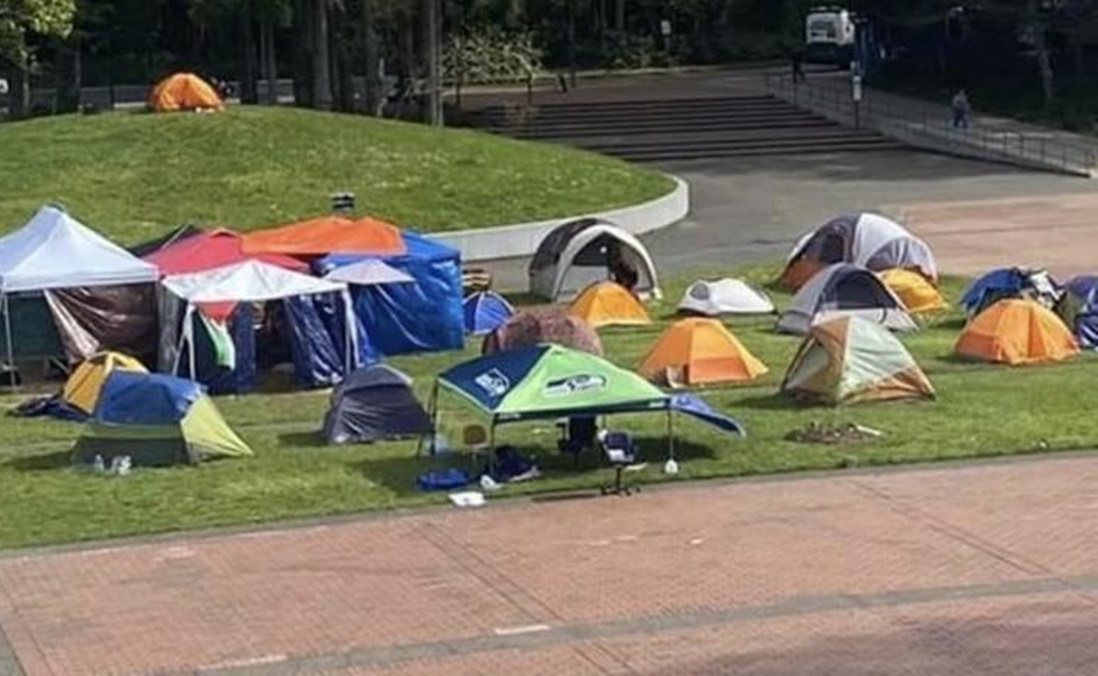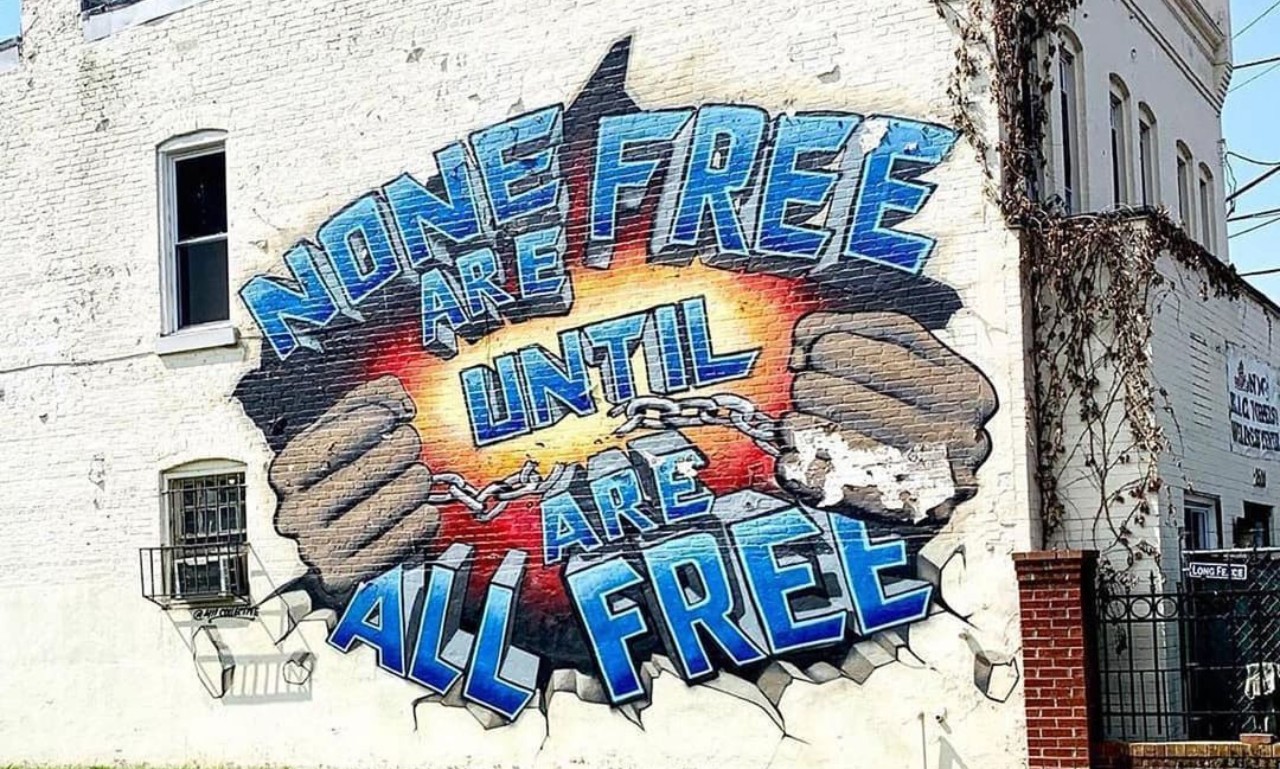Filed under: Anarchist Movement, Anti-Patriarchy, Featured, Interviews, Mexico

The following is an interview with an unnamed feminist-anarchist affinity group based in Mexico City conducted and translated by IGD contributor Scott Campbell. An edited version of this text appears in the newly released anthology Constellations of Care: Anarcha-Feminism in Practice, edited by Cindy Barukh Milstein and published by Pluto Press.
IGD: How would you like to introduce yourselves?
We should start by saying that we aren’t a collective or formal group. We see ourselves more as a small group of women and nonconforming folks who are united by love, friendship, and the struggle for freedom, autonomy, mutual aid, and life against the dynamics of the current patriarchal state.
We have known each other for several years and, amidst those, we have on several occasions been part of collectives or working groups, but we haven’t seen ourselves as needing to create a group as such. We come from different anarchist positions and we understand things differently in many cases, but we come together to do things jointly based on trust and the need to support our existence. We live in different parts of Mexico City where we carry out most of our struggles.
IGD: Can you elaborate on how you came to your anarcha-feminist positions, how you found one another, and how you decided to form an affinity group?
Not all of us conceive of ourselves as anarcha-feminists. We are all anarchists, anti-authoritarians, and anti-patriarchal, so we have never arrived at having a joint identity. We have come together based on the recognition that our own experiences have provided. We are a group that ranges from 20 to 40 years old. As such, we do not all have the same paths, trajectories, or positions.
All our stories are individual ones and each one took its time. For some, what was important was the break with those men who we believed to be compañeros and who betrayed, hurt, or snitched on us. With that we saw the crumbling of a discourse that was just that, a discourse. It did not delve deeply into how patriarchy runs through us. For others of us, the reality of being women and feminized bodies was always present, how we weren’t listened to or were made invisible in political anarchist spaces; that only masculine voices were respected, and that even when we sustained various activities and a large part of the anarchist movement in the city, we continued to be relegated and unheard. So we assumed a position of defense and necessary confrontation within the movement, which was exhausting, but that helped us to be in this place today, together.
In a way, we lost our fear of separatism [femme-only spaces], although we never stopped seeing that there are men in this world. We found one another in those spaces of the mixed anarchist movement through that recognition of oppressions intertwined between gender, class, schooling, age, and others. Sometimes this process of encounter was simultaneous to our male “compañeros” dropping like flies due to reports of sexual or physical aggression against other compañeras, which we could not deny nor support.
We were left in a space limited to mostly femme bodies where sisterhood and recognition occurred among peers and through our own experiences. We were left alone, or rather, we were defining our affinities with greater judgement – how great! – we recovered our affinity as feminized bodies within the anarchist struggle. We recognize ourselves as survivors.
From there, the confluence of our actions keeps us together. We fully trust each other regarding our position with respect to the state and the police, for example. We also know that each one of us walks the path of self-management and not hand in hand with NGOs or human rights groups. This has given us much of the confidence and trust that we have. Even though, we repeat, we don’t all come from the same anarchist background. We are united in our belief that our unwavering principles are an essential part of our ethics.
IGD: Can you provide a brief chronology of the resurgent feminist movement in so-called Mexico that began in 2018?
Although it is in 2018, when the “boom” in the feminist movement around the world is more visible in the media, with massive marches on March 8, strikes in universities in Chile, Mexico, Spain, France, Italy, the United States, etc., we consider that previous struggles cannot be left out of this upsurge. Whether we like it or not, including approaches that we don’t adopt, as seen, for example, in the pro-abortion movements and in the discourses that push for legislative and constitutional changes. We believe that the struggle for the reappropriation of our bodies marks an indisputable precedent, in some countries the voices of women and other bodies are beginning to be heard and the struggle for the right to decide for ourselves is strengthening. Not just with respect to abortion but also with respect to individual decisions around sexual pleasure.
In the case of Mexico, and specifically Mexico City, the struggle was obscured as it was appropriated by the state and the leftist government. The existence of such a small oasis in this country that provides non-criminalized abortion and guarantees for gay persons loses force due to the state’s interference in women’s bodies. For us, it is not enough for the state to decriminalize abortion, we simply and plainly do not want it to be in charge of regulating our sexuality and of controlling our bodies.
However, it is true that in Mexico we live in a very particular situation that makes this “boom” urgent and inevitable. We are talking about the fact that in our territory more than 11 women are killed every day. A “boom” that, we must also recognize, arrived late. What are we referring to? To the murders on the northern border, in Ciudad Juárez, where even the neologism “femicide” was born during the 1990s. Why didn’t the feminist “boom” explode then? Why was the massive murder of working women on the border made invisible? Why were we not outraged by so many bodies found scattered around the desert?
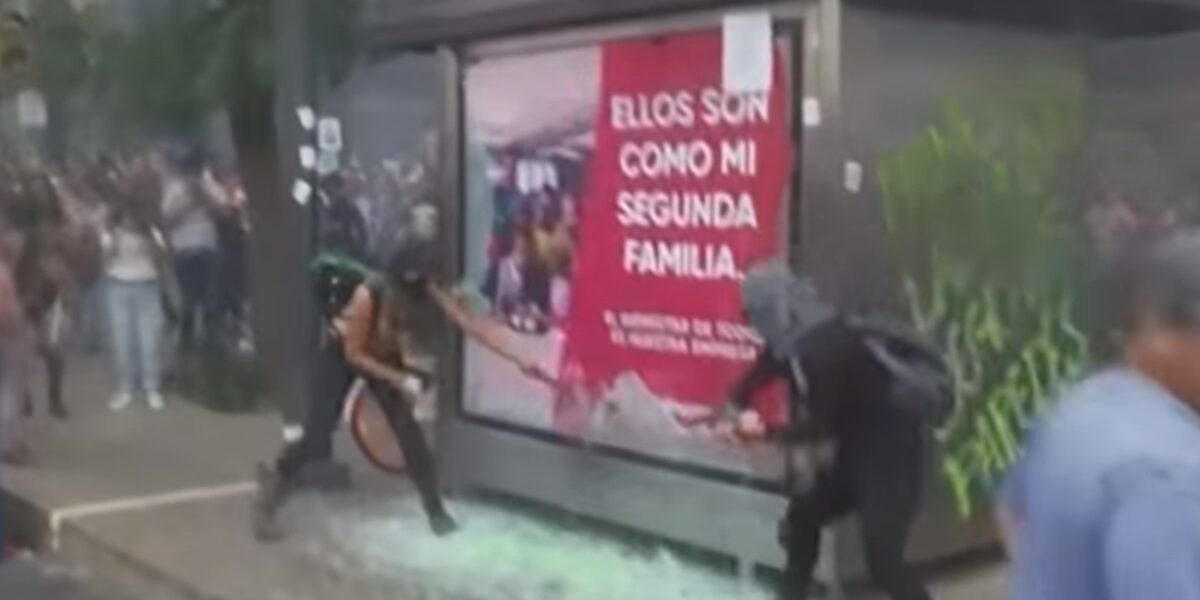
March against femicide on International Women’s Day erupts, 2020.
It’s true that those were different times, many of us were children or had not yet been born. Nevertheless, we believe that it goes beyond that, that it has to do with women whose deaths did not “deserve” to cause indignation because they were socially and morally devalued by the hegemonic discourse. They were morally unacceptable for going out late at night, for going out alone. They were invalidated under the construction of bodies that simply do not matter: poor, from the periphery, and workers. The state was lucky that there wasn’t enough social courage for the entire country to erupt at that point in the fight against death. Of course, at that time there were feminist collectives, academics, and some other lost politicians who pointed out the need to look at this problem. But we have to recognize that the state won that fight when, to this day, we are not even able to remember the names of some of these people, when we find it hard to say that we didn’t see or know what to do and that the state imposed its version of history. Unfortunately, the so-called feminist “boom” can also be read within the urgency to attend to less-stigmatized bodies: university students, professionals, immaculate mothers, etc., and, equally regrettable that even in this situation it is the same categories that determine who gets named and who doesn’t: the poor, whores, workers, and single mothers.
We like to think that the feminist “boom” is not 2018 and nothing more, that women and feminized bodies do not only appear when the media and the government decide to “recognize us.” We like to think that we can honor our ancestors by giving continuity to a struggle that we have joined, that we did not originate, and that does not answer to external agendas nor media attention but to an inevitable necessity where we fight to stay alive and to not forget any of our dead.
IGD: How has your group involved itself in the broader feminist movement? What forms of action, participation, intervention have you taken? Are there any particular anecdotes or moments that stand out to you?
As we have mentioned before, we’re not a formal group, much less a homogeneous one, therefore, the ways in which we are involved in the feminist movement are equally diverse. Some of us accompany the anti-carceral struggle, where some compañeras have faced charges after participating in feminist actions or protests; others of us are involved graphic design which continues to be necessary to visualize the struggle in the streets and online; others are committed to physical self-defense; others of us contribute through print publishing; others are committed to radio work; yet others are involved in the self-management of mental and physical health; others have started and sustain spaces of resistance such as book stores, libraries, cooperatives; others are involved in solidarity economies, and; in general, we are all in search of life and survival, which basically robs us of a lot of time and energy.
Something that we have seen that has become necessary to do together has to do with the precarious conditions that most feminized bodies experience. In this regard, in 2020, we saw how women were at greater risk due to forced confinement because they were with their aggressors all the time. It was necessary to go out and call on women to fight for life and to occupy the streets. We called for the creation of small markets, flea markets, and bazaars by and for women – there were also trans and queer friends – with the idea of surviving and exchanging the products we made and to spread awareness about our self-managed projects. That is how we found ourselves in the streets within a broader feminist movement. This is not easy because there are many positions and understandings within the movement that we don’t necessarily coincide with, but we firmly believe that it is the differences that make us powerful.
IGD: What have been the goals or aims of your interventions? What do you wish to make manifest when taking action?
As we come from anarchism, and we have little by little been breaking with its classical vision of struggle, we understand that the struggle is found in all spaces, micro and macro. Therefore, we don’t see the need to wait for some moment to intervene in this or that, rather we believe in the necessity of placing strain on the relations of domination – among them gender and sex – in the spaces that we inhabit: families, collectives, compañerxs, ourselves. But we can’t do that if we don’t struggle to make it clear that we exist, to make a space for ourselves among the already established structures of struggle, dissent, and society in general. That same space gives us the opportunity to make our positions clear, to go forward as we would like to live and according to proposals, that is, outside of the institutions, away from the state, through direct action, self-management, and autonomy.
Contrary to the fashion of “visibility,” we position ourselves through obscure and opaque daily action. Our action is our own manifesto.
IGD: What has the experience in participating in the movement felt like – somatically, emotionally, intellectually? What has it made possible that previously may have seemed foreclosed?
A point of street action that seemed impossible was the acceptance of the slogan, “It was all of us,” in a moment when the white feminist discourse seemed to prevail and the supposedly citizenist idea of the “good feminist” did not stop appearing, almost to the point of them becoming the “police” of the demonstrations, which they actually did with a citizenist call to protect women police officers during the demonstrations under the argument that they were also “sisters” and “women.” Currently, this slogan has been taken up by more and more compañeras in the street and that is motivating, however, we would like to transcend the slogan and see criminalization and political correctness be taken more seriously. Even so, hearing in unison: “It was all of us,” and to take on the rage of others as our own brings the body joy and reaffirms our presence in the streets.
We were not enlightened by 2018, so to speak. Many of us have already traveled a long road in the anti-capitalist and autonomous struggle. It was anarchy that gave us the possibility to position ourselves from a place of autonomy and to have a very deep critique of what it is to struggle against the prevailing system of domination. This path has given us immense possibilities, necessary stumbles, and inevitable ruptures. We have learned that from them emerge self-criticism, pressures, and openings. One of them was perhaps feminism, which has swayed us with respect to many questions, which has led us to explore micro and infra-political spaces. We approach feminism to a greater or lesser extent and make critical distinctions because we are not convinced that there is only one feminism, nor do we try to pursue it.
To place the body is, in this sense, to assume our struggle from within ourselves and towards the outside. To embody another struggle is to realize that part of it corresponds with us, such that we suffer it and are not indifferent to it. The somatic experience, as you call it, is indistinct. Sometimes we are literally a ticking time bomb, sometimes we are bodies that are vulnerable. Sometimes we are filled with collective strength and other times we feel like weirdos and singled out to such a degree that we become tiny; sometimes we laugh out loud and other times we simply weep in torrents.
IGD: How does it feel to be an affinity group of anarcha-feminists participating in the movement as opposed to going it alone? Can you share examples of how that has made a difference to you? How do you engage with each other beyond your affinity group?
We go alone and together. We believe in each other’s individuality and in the power of being together. But we know that not all of us want or can take on the same things or have the same abilities, to mention a few differences. Even so, knowing that we exist as a rare and amorphous entity has given us security in moving about our cities. We know that if one of us falls into the clutches of the police, there will be many of us outside of the police stations or the prison entrance. We know that if one of us is sick, we’ll have another one accompanying and caring for us. And we know that whatever idea we want to carry out, we can share it and find an echo among others.
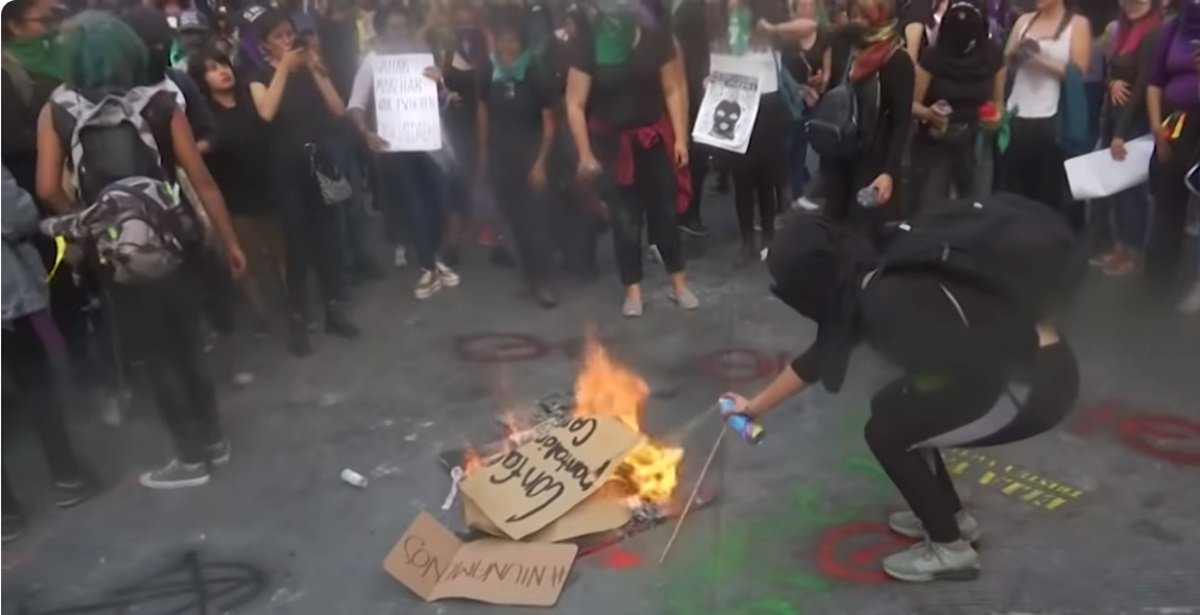
International Women’s Day in Mexico City, 2020.
In this way, we see that affinity cannot be measured entirely in political, strategic, and pragmatic terms, but goes hand in hand with how it transcends and traverses love, friendship, and the struggle for survival. Are we in affinity? Yes, but we are also accomplices, sisters, friends, compañeras. We don’t just see ourselves as an affinity group or meet because of that, we also do it because we care about each other’s lives, because we like to laugh together, eat together, cook together, and believe that this is how we will be able to survive. It encourages us a lot.
IGD: How do you articulate your anarcha-feminism, both in theory and practice? What are its aspirations and how do you work towards them? How does it attack gender and incorporate queer, trans, and non-binary perspectives and presences? How do cis men figure within your vision of anarcha-feminism?
As we mentioned, we have different roots, sexuality has not affected each of us in the same way and that means many things. The older members of our group grew up in a fairly heterosexual anarchist scene and therefore, non-conformity was more opaque or simply did not appear. Of course, we have very precious beings who are openly gay, but we understand, as the anarchist scene is heterosexual, those bodies escape from those spaces and construct their own. We recognize that we came late to many criticisms in this sense and little by little we have learned to come out of the closet ourselves or to deconstruct our own sex-gender identity, although we do not see it as the very core that defines us.
We have a critique of identity. Sometimes it means taking on an essence in order to act from a certain positionality, but most of the time it blurs a series of differences that to us seem necessary in order to walk together. Perhaps before indicating our sexual identity, we start from the point of being “dark-skinned” or Indigenous descendants, an inevitable matter that situates us on the stage of antagonistic struggles and more so in an essentially racist country. We are also poor, we come from places and families that have always struggled for survival.
We’ve learned that we can’t generalize, even though there are structures that affect all of us. And, in that sense, we see ourselves as distant from some groups of trans and non-binary people because we do not share conditions of class or race. As we have grown up marked by that racism, there are many non-conforming spaces where we don’t feel comfortable or where that feeling of being seen as strange or exotic accompanies us. Many queer and non-conforming spaces – not all – are part of the art world and we experience them as white and hostile places. Likewise, some of these people take part in the struggle from institutional, academic, or NGO spaces, spaces denied to us and that we reject. Our reality sometimes doesn’t allow us to understand their direction and many times we feel we don’t share the same concerns. Maybe it has to do with us still struggling in a broader sense by not abandoning the enormous desire to destroy the state and to see capitalism fall. Sometimes, the non-conforming compas focus a lot on the construction of sex and gender and our positions begin to bore them. Hahahaha.
We don’t take identity as the starting point, but rather the practice and ethics of our political actions; and anarchism on some occasions has given us the answer to feeling comfortable with our sexual and political differences. At least there are a few of us who are non-conforming, but yes, we think it would be much better if anarchism were nourished by these questions and displaced the machismo and heteronormativity that lives in its core, just as anarchism can bring important questions to the queer and non-binary struggles. In our ideal dream, this mutual reciprocity goes hand in hand.
We also know that language is patriarchal, so we take on the responsibility of thinking of new ways of naming ourselves and we are learning to do so.
We don’t trust in cis men. Our space does not seek to directly link with the compañeros. We don’t reject mixed spaces of work or coexistence, but our primary affinity is with women and feminized bodies, as we have mentioned in other questions. The relationship in mixed groups has almost always felt to us like a utilitarian relationship stemming from supposed collective and political positions. We are not interested in feeling threatened or vulnerable to patriarchal thoughts that for us still seek to “appear” as emerging from our efforts. But we have also learned not to nurture or contribute to enhancing that somewhat outdated type of anarchism.
As for our aspirations, we simply do not have them. The least we try to do is to walk towards life in a dignified way, towards death in a meaningful way, even if it is for ourselves. The maximum: the social revolution, the destruction of the capitalist-patriarchal system, the creation of other forms of living life, although we are not married to the idea that someday this will appear, rather we are building it as much as we can in the here and now.
IGD: There is unfortunately a large TERF presence in Mexico’s feminist movement. In some cases, TERFs have appropriated the aesthetics, rhetoric, and imagery of anarchism for their own ends. Can you explain this phenomenon and how feminist anarchists have responded to both transphobia and appropriation by parts of the movement?
For us, there is a theoretical confusion when one speaks of “radical.” On the one hand, we would say that the word made sense to us when it referred to the fact that radical feminists went beyond the demand for rights or equality for women; when patriarchy was seen as a pillar of domination in the capitalist world and, therefore, it stressed or deepened a series of structural conflicts within this world. It thus alluded to the term itself, going to the root of the problem and attacking it there, not merely on the surface.
Then the word radical, appropriated and transformed by the media, became synonymous and equal to “violent.” We are totally aligned with revolutionary violence, we do not deny that it is a necessary and valid tool. However, we have seen that equating radical with violent has led to confusion to what we want to say and how we want to say it. There were those began to claim violence as such, without consideration of the ends. We don’t necessarily disapprove of this. We even see that rage possesses an audacious and irrational potential that does not need to be examined with the magnifying glass of lucidity and we join in Luddite and joyful destruction. Even so, the words violent, radical – and ultimately reactionary – are used as if they were synonyms without explanation or asking ourselves why this is the case. We applaud the appropriation of the state’s pejoratives in order to resignify them, but we see in this standardization of terms more a lack of a necessary critical foundation rather than as an appropriation.
The black bloc aesthetic was adopted at this time. Certainly, it is necessary to visibly differentiate oneself from those who are against violence, to signal that this or that group will “act” in a non-passive way, to mark oneself among the masses as an action or offensive group. As in previous years, the aesthetic turned into vanity and identity. Dressing in black, wearing a mask, carrying objects for destruction and so on is not for us an aesthetic question, but rather a practical and strategic one. It aims for anonymity and direct action, seeking to strike blows and get away. In a certain sense, yes, for us, dressing in black bloc is to claim ourselves as anarchists and to honor the strategy as valid. Previously, this has helped identify ourselves with other groups we didn’t necessarily know, just like carrying the flag with the circle A. Meeting with another black bloc could lead to beautiful moments and then to retreat, but with that guarantee of the incognito and anonymous support of a compañerx.
Today, many girls dress is black bloc style because they understand that this is the dress of the RADFEM-TERF, who by the way, nowadays are not only the violent feminists, but are openly related to a current of feminism coming from the United States. One of their famous waves. We don’t believe we should base ourselves at all on those waves and many times they don’t even make sense to us because it is not the way in which our own history of feminism or antagonistic struggles plays out in our territory.

International Women’s Day in Mexico City, 2020.
Hegemonic feminism imposes its own rhythms, agendas, and even measurements of time. Waves of feminism are spoken of as if there were only one and as if in all of them were those who preceded us, without nuances, without particularities. Therefore, today’s RADFEM-TERF see themselves as part of one of those waves of feminism from the United States that is openly transphobic and locates the discussion around the naturalization and biologization of “women,” which takes us back decades and to the acceptance of binarism as an unquestionable Western category. This doesn’t happen in territories such as ours, where binarism is a consequence of colonialism.
For us, this relationship has crossed the thin line between radical and authoritarian. We have seen several historical examples where the same thing has happened. There is a very small step between being extreme and being fascist. Many of the women who theorize and defend RADFEM-TERF come from the most fascist, conservative, white currents of some Mexican elites. Does what they say make sense to us? In some cases, when they euphemize their terms, as for example, the “erasure of women,” it seems to make sense in a society that is machista in multiple forms. However, to say that this is a consequence of trans presence and visibility is the most ahistorical and fascist thing there is. It is the way in which a fact that is true, where women don’t appear in life or in history, is decontextualized to vainly “argue” against the appearance of a “minority.”
It is true that we do not agree with the whole trans world just for being trans. In Mexico, we have trans women – they didn’t identify themselves as such before, but that has been changing – occupying political positions and fighting on the side of power for decades. In fact, it was one of the reasons why the LGBT movement splintered in the 1980s. We insist on looking at the conditions of class, ethnicity, and sex as interlocking. The pro-power bourgeois trans are not our friends and never will be, any more than the policewomen and the white, fascist RADFEM. Perhaps there is more in common among them than they think, if we put it in those terms.
In short, we do not know if the anarcha-feminist movement exists as such and therefore we cannot speak for it. It’s happened that we have encountered RADFEM-TERFs at demonstrations, acting almost like us. Sometimes intuitively we don’t feel comfortable and sometimes we only respond when they have stated their transphobia. We don’t agree with them, but it is not in our interest to have a panel discussion with that tendency and fight over our aesthetic. Many of them have a strong presence on social networks – something that we don’t – and live there insisting, scolding, and monitoring everything they don’t agree with. In demonstrations, they dress in black bloc style but not for anonymity: they seek out the cameras, the spotlight, and then publish everything on their social networks to get likes. This means that they don’t understand the black block as a strategy, but rather as who knows what. It’s a bore to follow their actions. We simply identify our activities and events as trans-inclusive or, what could be understood as TERF-exclusionary.
IGD: Can you reflect on the presence of anarcha-feminism within the broader feminist movement in Mexico? How significant is it? What impact has it had? How has it been received by other (non-anarchist) feminists?
We believe that there are still few of us who come from a place of interweaving anarchism and feminism. Or there is a lot of confusion between the two. It is not a matter of having a lot of theory or reading all the books there are, but rather of how we are committed to putting our ideas and positions into practice. We believe that it is very important to maintain this coherence because hegemonic feminism aims at extreme cooptation, because the state and pro-state organizations are appropriating all the struggles and making them friendly to the system itself.
In doing so, they override and negate other forms of understanding feminisms, struggles, and actions. This is why we always point to the existence of many feminisms, to honor the difference as an essential part of the struggle. To aim at holding much broader views, that can elucidate those complexities of which we are a part and that are denied every time we try to make generalizations.
We believe that maintaining a fierce and voracious critique against the state and capitalism permits us to not waste time betting on lost struggles, for example, for the approval of laws that guarantee us security which, in the majority of cases, are applied against us or help to criminalize what is already criminalized: the poor and the racialized. However, we also see that especially in our context it is difficult to be present in certain struggles where that critique is applicable. For example, the struggles undertaken by the mothers of the disappeared or murdered, we don’t see ourselves with the ability nor the arrogance to tell them not to seek “justice” from within institutions or not to engage in dialogue with the representatives of power, because there are many cases where that is impossible to avoid. On the contrary, we see ourselves as deeply inspired by them, by their actions, by their paths, we believe that it is those collectives that nourish us and give us a lot of strength to continue.
We aim to create actions that also abandon the colonial gaze that tries to hegemonize, reprimand, and invalidate. And we keep our distance from positions that we don’t share. Doing so means being able to steep ourselves in other forms of struggle and to be permeable to other forms of struggle without betraying ourselves.
IGD: As mobilizing in Mexico can be understood as part of a wave of feminist action throughout the so-called Americas, how do you see anarcha-feminism as internationalist in scope? What connections have been built across colonial borders and nation-states?
Since the break with cis men in our spaces, we have seen a conscious organizational advance from the perspective of anarcha-feminism. The presence in the streets and taking on demands from an antipatriarchal perspective have been fundamental to seeing and being in solidarity with others in different latitudes. Understanding that women around so-called Latin America are being murdered as a result of being objectified as merchandise has given us the opportunity to create spaces for dialogue to understand our realities. The radicalization of demonstrations has called on us to denounce and act against disappearances, femicides, and anti-abortion.
Our affinity is not only because we are women or nonconforming, it is because in our actions we seek a radical rupture with traditional patriarchal impositions and we see with pleasure that this rage is spreading, beginning transcendent struggles. In some countries, they have been initiated by women and have been able to stay active due to organizational persistence that emanates from our groups or individualities.
We also see that the states seek to appropriate these struggles, and when we hear or witness these critiques from other territories – with whom we share a process of colonization – we experience those resonances with joy. We feel less alone and less lost when we hear those echoes. We have learned a lot from them. Primarily to utilize anti-colonial perspectives to be able to build from our own parameters, with our own peoples, with our own times, and without the need to take as a reference the murderous states nor colonial imposition in any of its forms, including Western, hegemonic, white feminism.
IGD: What has been the State’s response to feminist and anarcha-feminist mobilizing and action? How do you see anti-repression work as being a part of anarcha-feminist work?
We live in Mexico City and we are a small group. It is important to emphasize this because we are not trying to speak any truths nor make any generalization.
In Mexico City, we have been under decades of leftist governments, which in legal terms has translated into a series of lax, pro-women reforms. For example, the decriminalization of abortion, same-sex marriage and adoptions, among other little things. Contrast this with the number of femicides committed daily throughout the metropolitan area, which is not just Mexico City.
Each leftist government has had its own ways of responding to our organizing, especially that which is autonomous and anarchist. So far under the current government, which has utilized feminist rhetoric and implemented “anti-repressive” pro-human rights policies, two things become intertwined. On the one hand, there is the construction of a legalistic leftist discourse that, by denying the public use of force, annuls the action of those who use force outside of the monopoly of the state. That is to say, if the government and police act in a passive manner, why are there groups and individuals who decide to carrying out violent direct actions? As such, a discursive framework is created and legitimacy is given to act within the “legal frameworks” of repression. This is supported by the pro-state and pro-rights feminists who also condemn violence and play the dirty game of pointing fingers at those of us who do not. We have seen cases where even the supposed “architects” of some actions are singled out through social media to discredit them and condemn them as criminals.
In previous years, the conflict was a little more open. Clashes with the police were more frequent than now. Today, everything is carried out in the background, behind closed doors, and with legal strategies that form this anti-repressive framework we mentioned. We are facing a more sophisticated mechanism of repression. In recent years, we have seen little response to, or rather, hypocritical responses to demonstrations. And this means that violence – in terms of public opinion – is only pointed out and denied to one party: to us. That is to say, when power constructs an anti-repression framework and doesn’t give visible signs of violence, the violence exercised by us becomes invalid and annulled. If there doesn’t exist a “pretext” for confrontation, there is no need for the rage and irrational violence of feminist protests.
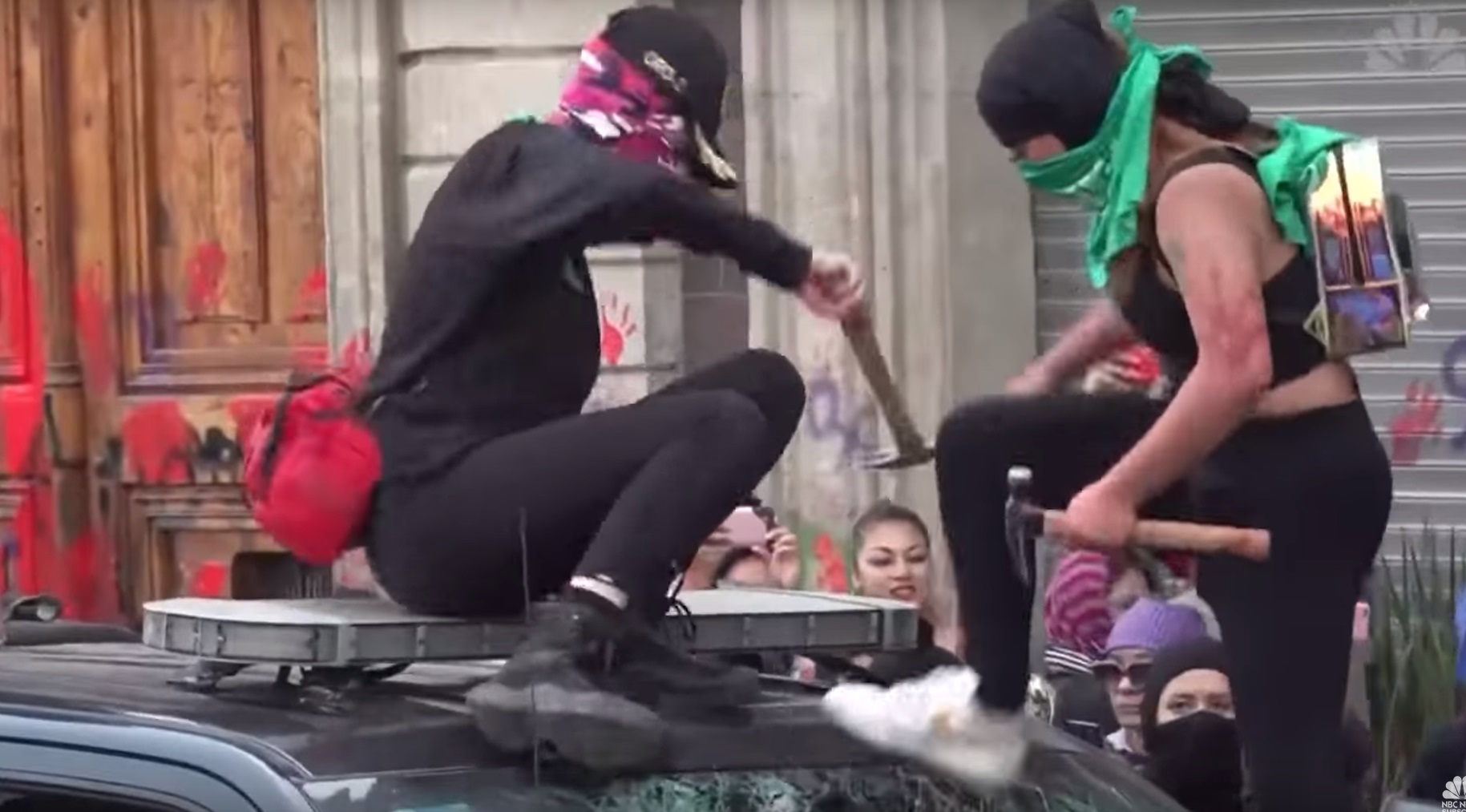
Attacking police car in Mexico City International Women’s Day march in 2020.
All this can only be allowed if we don’t understand how the mechanisms of power move. Added to this, those who opt for violent action are accused of being “infiltrators” and part of groups paid by political parties who are currently not in power to attack the permissive and passive policies of the leftist government. Even worse, women defenders of order form citizen defense groups to protect policewomen from irrational attacks.
On the other hand, the anti-repressive measures, specifically with regards to the feminist movement, also go hand in hand with the institutionalization of feminism, which is also a worldwide phenomenon, rescued by institutions, governments, the television industry, NGOs, etc. This being the case, the margins of legitimacy become more tenuous and deceptive. That is to say, if there exists a legal framework where supposed feminist demands are being attended to by the governments, there is no reason to protest. Constitutional reforms and institutional bodies, along with their own understanding, become the government’s main course of action against the situations we live under.
Legalization of abortion, gender parity in public positions, commissions for the attending of women, protocols for attention to harassment, specific institutions to investigate cases of femicide, regulations in all government institutions to adopt a “gender perspective,” and to all that we add the many NGOs and women’s rights institutions that have emerged in defense of human rights, to accompany femicides, and a long etc. These initiatives have not only succeeded in giving a framework of legitimacy to the governments and structures of power, but have also coopted many of the good intentions of people who pass from being “street activists” to working as paid feminists, managing to fall into the already outdated form of “fighting against power from the inside.”
In recent years, we have seen that the strategy of the state is being directed at organized women, many of them with ongoing legal cases, others threatened with arrest and the fabrication of crimes, others jailed, and others murdered. Historically, we have seen the abandonment of our persecuted or imprisoned women, possibly because we respond in patriarchal ways, given that men suffering imprisonment receive more attention and accompaniment. We are glad that in the most recent protests for the freedom of our compañeras, a feminist presence has been visible, but it has not had that massiveness of when we talk about the feminist movement. The media campaigns are ridiculous, but they have managed to propagate the isolation of our compañeras in prison or facing charges. They individualize each process and hide the repression with their own legal strategies.
Our group sees the abolition of prisons and the anti-carceral struggle as a main axis, so as we’ve been able to, we have supported this effort economically, practically, and theoretically.
IGD: What do you see in the future for anarcha-feminist organizing and the feminist movement more generally in Mexico?
From our analysis, there is an ideological vacuum. For this reason, we see little uplift in anarcha-feminist organizing. Perhaps there is a street presence, but with little intention for analysis or study. It is worrying to see how the bulk of the world perspective sees the only path as through reform and charity. We know that the need for justice and economic security is great. In turn, the organizing that has occurred since the pandemic has allowed for the opening of furrows where we’ve seen self-management and rebellion flourish and where we have brushed its fierce and faint breath with anarchy.


